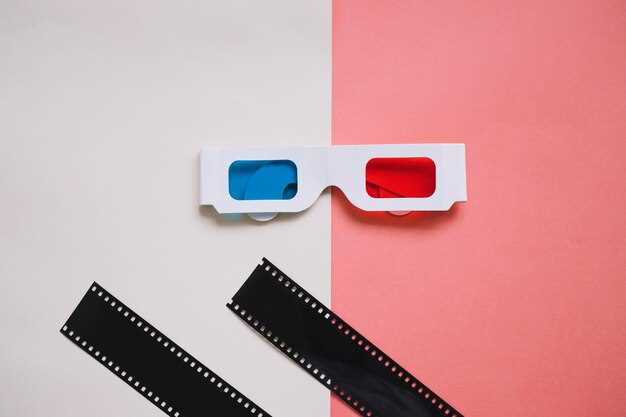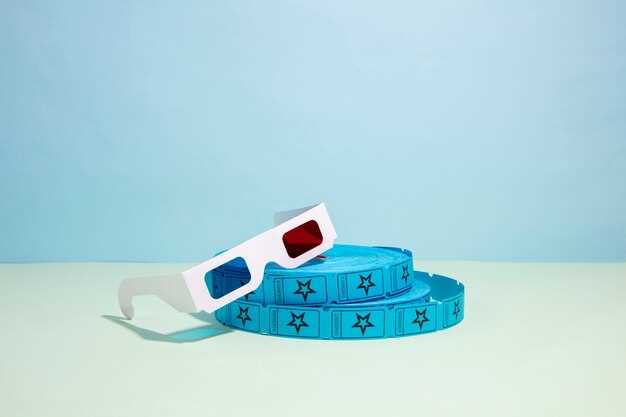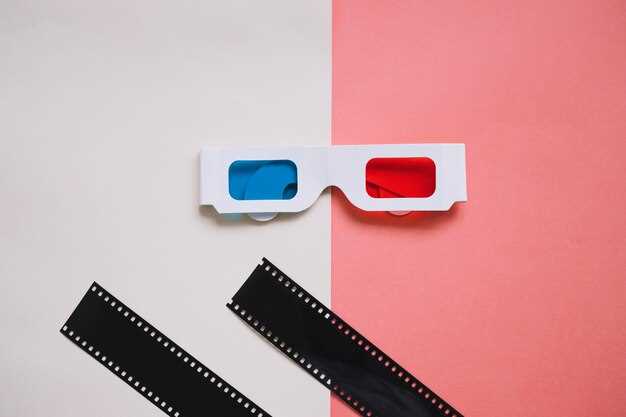Sony holds a commanding lead in the mirrorless segment as of 2025. The company’s innovative Alpha series cameras have set new standards in image quality and speed. Enthusiasts and professionals alike appreciate the cutting-edge autofocus technology that Sony offers, which deftly tracks subjects with remarkable precision. Additionally, the integration of AI-driven features has enhanced the user experience, allowing photographers to focus on creativity rather than technical settings. For those seeking top-tier technology in mirrorless cameras, Sony remains the go-to choice this year.
On the other hand, Canon continues to dominate the DSLR realm while making significant strides in mirrorless technology. Their EOS R series has advanced substantially, incorporating many features that appeal to long-time Canon users. With a strong emphasis on lens quality and color science, Canon provides compelling value to photographers dedicated to capturing lifelike images. New sensor advancements and video capabilities keep Canon competitive, especially among videographers who cherish the brand’s legendary color rendition and robust build quality. For DSLR enthusiasts and those looking for a seamless transition into mirrorless, Canon remains a reliable partner.
The future of photography in 2025 demands flexibility and adaptability, and both brands excel in delivering these traits in distinct yet overlapping ways. Sony and Canon each offer unique advantages depending on user priorities, whether that be innovation, tradition, or a mix of both. Potential buyers will benefit from evaluating their personal needs to determine which brand aligns best with their photographic aspirations and professional requirements.
Canon Mirrorless Camera Comparison

Choose the Canon EOS R5 for exceptional resolution at 45 megapixels, making it ideal for studio and high-detail landscape photography. The dual card slots ensure flexibility and peace of mind, while the advanced AF system with eye-tracking enhances portrait shooting.
- Canon EOS R5: 20 fps, 8K video, 5-stop image stabilization. A powerhouse for videographers and photographers needing high-performance features.
- Canon EOS R6: 20.1 megapixels, perfect for wedding and event photographers requiring excellent low-light performance and up to 20 fps shooting.
- Canon EOS RP: Compact and cost-effective, with a 26.2-megapixel sensor, it suits enthusiasts venturing into full-frame mirrorless photography.
- Canon EOS R3: Designed for sports and wildlife photographers, offering 30 fps burst and superb subject tracking, this camera caters to professionals requiring speed and precision.
- Canon EOS R7: Featuring an APS-C sensor, it is a great fit for those seeking a balance between portability and performance, with a 32.5-megapixel resolution and fast autofocus.
For videographers, the EOS R5 stands out with its 8K capability, while the EOS R6 offers 4K performance with larger pixel size allowing better low-light capture. Enthusiasts looking to prioritize image quality on a budget might consider the EOS RP. Each option caters to specific needs, ensuring different types of photographers find their perfect match.
Image Quality: Evaluating Sensor Performance
Sony cameras consistently deliver superior dynamic range and low-light performance due to their innovative Exmor R and Exmor RS sensor technologies. For professionals seeking high ISO capabilities with minimal noise, Sony often sets the benchmark. The backside illumination and stacked sensor design contribute significantly to capturing detailed images even in challenging lighting conditions.
Canon, renowned for its color science, frequently offers excellent color depth and reproduction, satisfying photographers who prioritize organic and skin tones. Their Dual Pixel CMOS AF sensors deliver exceptional autofocus performance, which is crucial for video recording and live view shooting.
When choosing between Sony and Canon, assess specific sensor attributes crucial for your photography style. If dynamic range and versatility under varied lighting are top concerns, Sony’s sensor technology excels. For portrait and event photography emphasizing color accuracy, Canon’s sensors often yield more pleasing results. Whatever brand you opt for, prioritize the sensor characteristics that align best with your artistic vision and technical requirements.
Autofocus Capabilities: How Canon Stands Out in 2025
Canon leads the autofocus innovation in 2025, providing photographers with unmatched precision and speed. The DIGIC X processor powers Canon’s groundbreaking autofocus systems, delivering smooth and quick focus transitions unrivaled in today’s market.
Canon’s Dual Pixel CMOS AF II system continues to impress, offering enhanced subject tracking and seamless recognition of people, animals, and vehicles. This technology allows photographers to capture complex scenes effortlessly, accurately locking onto subjects even in challenging lighting conditions.
The latest Canon mirrorless models boast up to 1,053 autofocus points, covering nearly the entire sensor surface. This expanded coverage ensures subjects remain sharp, whether in the frame’s center or edge.
Eye Detection AF has been improved for superior performance, providing precise eye focus, crucial for portrait and wildlife photography. Canon’s AI-driven autofocus further enhances the user experience, learning and adapting to various shooting scenarios.
The built-in subject detection and recognition have set a new standard, ensuring Canon users can keep pace with fast-moving subjects without missing critical shots. Whether shooting dynamic sports events or capturing intimate wildlife moments, Canon’s autofocus stands as a reliable partner in 2025.
Lens Selection: Comprehensive Options for Every Photographer
Sony’s G Master series lenses deliver exceptional sharpness and clarity, ideal for portrait and landscape photographers. Their E-mount system, compatible across multiple cameras, offers versatility for creators who frequently switch between different types of shoots. Fast autofocus and enhanced low-light performance ensure that photographers never miss a moment.
Canon’s RF lenses, designed specifically for their mirrorless line, have gained acclaim for their innovative features like Control Ring for custom settings on the fly. The diversity in focal lengths caters to every imaginable need, from wide-angle perspectives with the RF 15-35mm to excellent telephoto options like the RF 100-500mm. Canon’s dual-pixel autofocus enhances video capture capabilities, attracting hybrid shooters.
For those who value compact and lightweight options, Sony’s prime lenses, such as the 24mm f/1.4, deliver high-quality optics in portable forms. Meanwhile, Canon’s affordable EF lenses remain relevant with adaptors for mirrorless bodies, offering budget-friendly avenues without sacrificing image quality.
Sony excels with silent AF motors, beneficial for videographers concerned about audio interference. Meanwhile, Canon’s focus on optical image stabilization stands out, making handheld shooting more stable. Whether prioritizing technology, adaptability, or size, both brands present unique strengths catering to exacting demands of diverse photographic styles.
Video Capabilities: Meeting the Needs of Modern Content Creators
For creators focusing on video production, Sony’s Alpha series stands out with its advanced autofocus features and impressive low-light performance, thanks to cutting-edge Exmor sensors. The A7S III, for instance, excels in 4K video recording at 120fps with minimal rolling shutter, making it perfect for dynamic, fast-paced content.
Canon, on the other hand, offers robust color science and a reputation for cinematic quality, especially in the EOS R5 and its ability to shoot 8K RAW video. This capability is ideal for creators who prioritize post-production flexibility or require high-resolution footage to crop and edit extensively without sacrificing quality.
For those who require reliable autofocus during video shoots, both brands have made significant strides, but Sony’s Real-time Eye AF and Animal Eye AF provide distinct advantages during unpredictable shoots involving people and pets. Meanwhile, Canon has improved its Dual Pixel AF technology, maintaining smooth and accurate focus transitions.
Considering ergonomics and handling, Canon’s menu system and intuitive layout are often praised for ease of use, particularly beneficial during long shoots. Sony’s compact designs balance well with portability needs, fitting comfortably for creators frequently on-the-go.
Battery performance sees dominance by Sony, which consistently outperforms competitors, supporting extended recording sessions without frequent recharges. Yet, Canon’s latest batteries offer improved longevity, closing the gap regarding shooting endurance.
Both brands include excellent stabilization systems. Sony’s in-body image stabilization (IBIS) in the A7 series and Canon’s coordinated IS in lenses offer smooth footage even in handheld situations, crucial for vloggers or documentary filmmakers working in dynamic environments.
Ultimately, choosing between Sony and Canon depends on specific project requirements and personal preferences regarding handling, autofocus needs, and final output priorities. Evaluate each model’s strengths, aligning them with your creative vision, to ensure the right decision for your unique content creation needs.
Sony Mirrorless Camera Comparison

Choose the Sony A7 IV for its exceptional balance of performance, features, and price. It shines with a 33-megapixel sensor, real-time autofocus tracking, and 4K 60p video, making it ideal for both photographers and videographers who need versatility without breaking the bank.
For those prioritizing video capabilities, the Sony A7S III stands out. Its 12-megapixel sensor ensures outstanding low-light performance and delivers 4K video at 120 frames per second with 10-bit 4:2:2 color sampling. Built for filmmakers, the camera also features dual card slots that support both CFexpress Type A and SD cards, providing flexibility and reliability during intense shooting situations.
If high resolution is your main criterion, the Sony A7R IV offers an incredible 61-megapixel sensor, delivering ultra-detailed images suitable for large prints and intricate cropping. Professionals in landscape, commercial, and studio photography will appreciate the depth and clarity this model provides. It also features robust connectivity options, including USB-C, Wi-Fi, and Bluetooth, ensuring seamless integration into any workflow.
Each model boasts the BIONZ XR processor, enhancing speed and image quality. Whether you need versatile performance, video-specific features, or unparalleled resolution, Sony’s mirrorless options provide top-tier solutions tailored to diverse creative needs.
Low-Light Performance: Tackling Challenging Lighting Conditions
Choose the Sony A7S series for unparalleled low-light capabilities. Its full-frame sensor combined with larger pixels allows the capture of more light, minimizing noise at higher ISO settings. Sony’s advanced noise reduction algorithms enhance image clarity, making it a preferred choice for photographers who frequently shoot in dim environments.
- Sony’s A7S series cameras can efficiently shoot stunning images even at ISO 409,600, providing an edge over Canon’s offerings.
- Canon’s full-frame models like the EOS R5 offer competitive performance, but struggle with noise beyond ISO 51,200 compared to Sony’s A7S.
For video enthusiasts, Sony’s low-light video capabilities, especially in 4K, are remarkable, featuring superior dynamic range and detail retention in shadows. Canon, while possessing strong low-light performance, tends to show more noise in low-light 4K video footage.
- Sony’s autofocus remains fast and accurate in poor lighting, providing consistent performance.
- Canon’s Dual Pixel CMOS AF is effective, but may face challenges in extremely dark settings compared to Sony’s phase detection AF.
If astrophotography or events photography is your focus, Sony offers distinct advantages. However, Canon’s robust color science and reliable performance still make it a contender, especially for those prioritizing tonal quality over noise reduction.
Battery Life: Maximizing Shooting Time
Use the Eco Mode feature on Canon and Sony cameras to maximize battery life, allowing for longer shooting sessions without needing to change batteries frequently. Both brands offer this mode, which reduces power consumption by turning off the LCD screen and lowering processing speeds when not in use.
Carry extra batteries for extended shoots, as both Sony and Canon have compact battery options that are easy to store in your gear bag. For instance, Canon’s LP-E6 series and Sony’s NP-FZ100 deliver high capacity and can be quickly swapped when power runs low.
Invest in a battery grip compatible with your camera model. This not only increases your camera’s bulk but also allows for additional battery slots. Canon’s BG-E22 for the EOS R series and Sony’s VG-C4EM for the Alpha A7 series enable twice the shooting time without a mid-session recharge.
Choose energy-efficient lenses, as autofocus and image stabilization features can drain battery life. Both brands offer STM lenses for Canon and G Master lenses for Sony that are designed to balance performance with power efficiency.
Disable non-essential features such as Wi-Fi or Bluetooth unless they are necessary for your shoot. This significantly conserves battery power on both Sony and Canon cameras by reducing active background processes.
Ergonomics and Design: User Experience Insights in 2025
Choose Sony for a modern, sleek design that prioritizes intuitive controls, especially if you’re constantly on the go. Their mirrorless cameras boast a compact form factor without compromising functionality. This becomes invaluable during dynamic shoots, allowing easy access to all essential features.
Canon excels in ergonomic grip, which benefits those engaged in prolonged sessions. Its DSLR models maintain a robust build, yet the layout ensures fatigue-free handling. Photographers with larger hands appreciate the spacious button placement, resulting in a seamless experience.
In 2025, voice-command features enhance both Sony and Canon cameras, drastically improving user interaction. With Sony’s AI-driven scene recognition, expect a camera that adjusts settings autonomously, keeping your focus on creativity. Canon offers touchscreens with haptic feedback in their latest models, increasing engagement through tactile responses.
Both brands now incorporate customization options, yet Canon goes a step further with an interchangeable interface system, letting users tailor controls to personal preferences. Meanwhile, Sony integrates biometric authentication, providing an added layer of security and personalized accessibility.
For environmentally conscious users, Sony’s use of sustainable materials sets a new standard in ecological design. Canon, although slightly lagging in this area, compensates with stronger community engagement by offering educational resources on eco-friendly practices.
Opt for Sony if you prioritize portability and cutting-edge interaction. Choose Canon when a more traditional feel with extensive customization is your preference. As technology leaps forward, both brands continue refining ergonomics to meet diverse user needs efficiently.
Connectivity and Technology Integration: What’s New This Year?
Embrace seamless connectivity through Sony’s 2025 lineup featuring advanced Wi-Fi 7 and Bluetooth 5.3, ensuring faster data transfer and extended range. A standout feature is their integration with Smart Home systems, allowing photographic equipment to sync effortlessly with IoT devices, making remote control and automation a breeze. Canon steps up with their expanded cloud services, enhancing image storage and sharing capabilities. Their AI-driven software streamlines workflow integration across multiple platforms.
For professional photographers and hybrid creators, Sony offers enhanced multi-device compatibility through their new Edge Camera Adaptor. This tool bridges connections across devices, significantly reducing lag time in live streaming situations. Meanwhile, Canon introduces a cross-device image editing suite, compatible with major operating systems, to provide a cohesive editing experience right from the camera interface without needing third-party apps.
Consider factors that affect ease of use during shoots. Sony’s voice command feature has been refined this year, supporting multilingual inputs to improve efficiency in managing camera settings in hands-free shooting scenarios. Canon enters with a real-time translation feature in video conferencing, targeting professional setups where communication across borders is essential.
Explore the specifics in the table below to quickly compare how these brands integrate new technologies:
| Feature | Sony | Canon |
|---|---|---|
| Wi-Fi & Bluetooth Technology | Wi-Fi 7, Bluetooth 5.3 | Wi-Fi 6, Bluetooth 5.2 |
| Smart Home Integration | Advanced IoT Synchronization | Basic IoT Compatibility |
| Cloud Services | Basic Cloud Options | Expanded Cloud Services |
| Editing Suite | Edge Camera Adaptor | Cross-device Editing Suite |
| Voice & Real-time Translation | Multilingual Voice Command | Real-time Translation |
Video:
Why EVERYONE Is Switching To SONY
Why EVERYONE Is Switching To SONY
Q&A:
Which brand offers better image quality for professional photographers in 2025, Sony or Canon?
In 2025, Sony and Canon both provide impressive image quality, but the choice depends on specific needs. Sony’s full-frame sensors are renowned for their low-light performance and dynamic range. Meanwhile, Canon’s color science is praised, especially for portrait photography. Professional photographers might prefer Sony for landscape and event photography, while Canon could be preferable for portrait and studio work due to its color accuracy.
Is there a significant difference in autofocus performance between Sony and Canon cameras?
Yes, there are differences. Sony has been a pioneer in developing advanced autofocus systems, offering real-time tracking and eye autofocus in both humans and animals. Canon, however, has narrowed the gap significantly with their Dual Pixel autofocus technology, providing smooth and reliable focusing that is especially beneficial in video production. Both brands offer highly competitive autofocus systems in 2025, but Sony may have a slight edge for sports and wildlife photography.
What are the strengths of Canon cameras in 2025 compared to Sony?
Canon’s strengths lie in its extensive range of lenses and robust ergonomics, which many photographers find comfortable for extended use. The company also excels in color science, delivering vibrant and accurate color reproduction. Furthermore, Canon cameras are often praised for their intuitive user interfaces, making them accessible for both beginners and professionals.
Do Canon or Sony offer better support for videographers in 2025?
Both brands have made strides in catering to videographers, with Canon offering superior color rendition and smoother autofocus thanks to its Dual Pixel technology. Sony, however, boasts impressive video capabilities with high frame rates and superior low-light performance. Those seeking high-resolution footage might gravitate towards Sony, but Canon provides reliable tools for filmmakers prioritizing color accuracy and autofocus.
Which brand provides better value for photographers upgrading from entry-level cameras?
For photographers upgrading from entry-level systems, Canon provides a seamless transition with a wide range of mid-tier cameras that maintain familiar interfaces and compatibility with existing lenses. Sony’s range, on the other hand, offers innovative features and is often preferred by those looking to explore new technologies like mirrorless systems. Ultimately, the better value depends on what features are most important to the photographer in question—be it the breadth of ecosystem (Canon) or cutting-edge technology (Sony).
Which brand offers better image stabilization in 2025, Sony or Canon?
In 2025, both Sony and Canon have made significant improvements in their image stabilization technologies. Sony’s in-body image stabilization continues to impress with its high performance, particularly in low-light scenarios. On the other hand, Canon has also advanced its optical stabilization in lenses, providing photographers with excellent stability during handheld shooting. For videographers, Sony might have a slight edge due to its highly-rated stabilization in the latest mirrorless models. However, Canon is not far behind, making it a tough call depending on specific needs and preferences.
